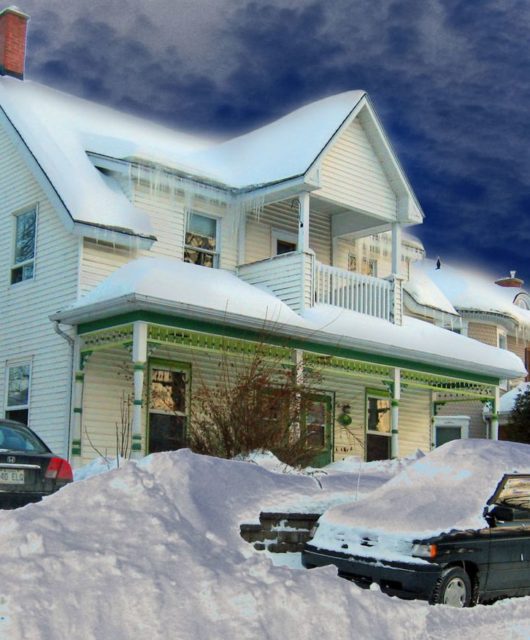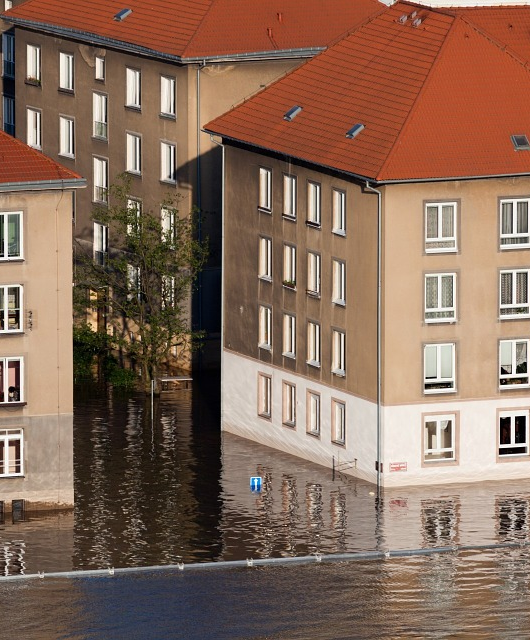Is Your Roof Ready for a Windstorm?
 With the windstorm seasons upon us, asking yourself whether your roof is ready for it comes naturally. Even though windstorms do not necessarily pose an immediate threat to your property, they can easily damage any type of roof. For this reason, it is important to stay up to date with your roof’s condition. By doing so, you will be able to successfully detect early signs of wind damage on the roof and address them accordingly.
With the windstorm seasons upon us, asking yourself whether your roof is ready for it comes naturally. Even though windstorms do not necessarily pose an immediate threat to your property, they can easily damage any type of roof. For this reason, it is important to stay up to date with your roof’s condition. By doing so, you will be able to successfully detect early signs of wind damage on the roof and address them accordingly.
Table of Contents
The Importance of Your Roof
The roof is an integral part of the house’s structure. Since other parts of the house are not as good at handling heat, precipitation, and wind, the roof is there to support them. If any signs of wind damage on the roof are left unattended, they can lead to more severe issues further down the line. Some of these include roof leaks and the house becoming susceptible to rotting. Additionally, more extreme cases can result in visible damage to the house’s core structure. That is to say, the house’s very foundation, drywall, joists, and siding can be put at risk.
How to Choose and Understand Your Roof Better
Choosing the right material when building a roof can help you defend against nature elements more effectively. Even if you are not the original proprietor of your house, understanding how your roof was built is important for its preservation. With that said, if you are looking to build your roof from scratch or replace an existing one, the
information below might help. In modern housing, wood shingle, slate, metal, concrete, and asphalt are among the
most popular roofing materials. While some of these offer better protection than others, certain details when opting for a specific roof type should take precedence. First, you need to think about the weight of your desired roofing material and whether it requires special framing. Second, the material’s life span, warranty, and overall cost
should be equally important. And last but not least, abiding by the local building codes will ensure that the roofing material you choose is not incompliant.
Be that as it may, failing to take note of extreme weather conditions in your area can still result in a leaking roof. In other words, opting for a performance-based roof according to the house’s location is probably your best shot at opting for the right roofing design.
Wind Damage Comes in Different Forms
With all that in mind, windstorms are unpredictable. Although their effects may vary, most signs of wind damage on the roof can be attributed to one of the following:
1. Tree damage
Strong gusts of wind can break tree branches off and cause old trees to fall. Trimming the trees around your house or uprooting them will prevent severe damage to your roof.
2. Hail damage
Depending on the roofing material, its condition, and age, hail can damage the roof during windstorms differently. Your roof can have the gravel knocked loose, the tiles cracked, or the metal plates dented.
3. Wind damage
The windstorm itself can cause severe damage to the roof even without any falling debris. Strong wind is known to peel, curl, or pry loose shingles or tiles on your roof and send them flying.
What Your Roof Would Like You to Do Before a Windstorm
On average, a roof can last up to twenty years. Regardless of its age, you can ensure that your roof remains healthy and lasts longer.
1. Provide adequate airflow
The attic is probably not the first thing that comes to mind when somebody mentions windstorms. However, proper ventilation in the attic will prevent pressure from building up inside. This way, you will not risk losing the entire roof during a windstorm.
2. Check the wind ratings
If you are located in an area that is prone to windstorms, see that the roof’s wind ratings are sustainable. That is to say, your roof should be able to withstand winds that go up to 150mph. Coupled with storm-rated adhesive, correct wind ratings will ensure your roof stays in place during a severe windstorm.
3. Consider adding impact-resisting qualities
As previously mentioned, hail and debris can impact the roof negatively during windstorms. To reduce the signs of wind damage on the roof, roof brackets and trusses may be needed.
4. Look for existing damage on the roof
Despite your best efforts, roof damage can be unavoidable. Blistering, buckling, curling, cracked, or missing shingles indicate that your roof has suffered wind damage. Moreover, missing chimney caps, rust spots, or cracked caulk on the flashing can further attest to this.
5. Schedule regular inspections
After discovering various signs of wind damage on the roof, you can choose to tend to them yourself. However, regular inspections conducted by roofers will see that your roof is always prepared to handle any upcoming windstorms. To that end, roof maintenance is imperative.
Final Thoughts
In the long run, the best way of knowing whether your roof is ready for a windstorm is to remember that prevention and maintenance can only do so much. That is to say, you should consider having the roof replaced by a professional roofing company if it is nearing maturity. Until then, discovering and addressing different signs of wind damage
on the roof early will keep both you and your house safe.









